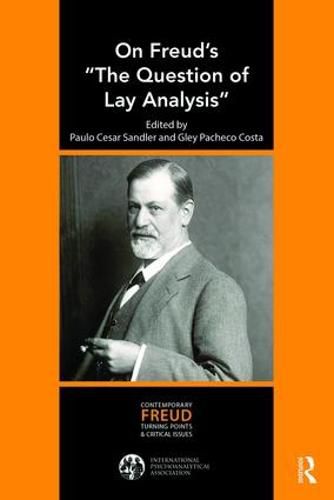Readings Newsletter
Become a Readings Member to make your shopping experience even easier.
Sign in or sign up for free!
You’re not far away from qualifying for FREE standard shipping within Australia
You’ve qualified for FREE standard shipping within Australia
The cart is loading…






The questions of what psychoanalysis is, and does, and who can and should practice it, remains key within the modern profession. Has the invaluable material packed into Freud’s The Question of Lay Analysis (1926) been underestimated by contemporary psychoanalysis? This book explores how the issues raised in this paper can continue to impact contemporary Freudian theory and practice. The chapters examine why the arguably litigious nature of the paper might be contributing to its neglect and underestimation.
The editors of this book put forth a hypothesis: is there an underlying, still unrecognized, but heartrending factor underlying the century-old quarrel between lay analysts and what might be described as medically or psychiatrically trained analysts? They then brought together a selection of major contemporary psychoanalytic thinkers from around the world to attempt to bridge the seemingly unbridgeable gap between medical and non-medical analysis, using The Question of Lay Analysis as a central pivot. The work of the key figure, in social and historic terms, on this issue, Theodor Reik, is also duly honoured.
On Freud’s The Question of Lay Analysis will be of great interest to all psychoanalysts and psychoanalytic psychotherapists.
$9.00 standard shipping within Australia
FREE standard shipping within Australia for orders over $100.00
Express & International shipping calculated at checkout
The questions of what psychoanalysis is, and does, and who can and should practice it, remains key within the modern profession. Has the invaluable material packed into Freud’s The Question of Lay Analysis (1926) been underestimated by contemporary psychoanalysis? This book explores how the issues raised in this paper can continue to impact contemporary Freudian theory and practice. The chapters examine why the arguably litigious nature of the paper might be contributing to its neglect and underestimation.
The editors of this book put forth a hypothesis: is there an underlying, still unrecognized, but heartrending factor underlying the century-old quarrel between lay analysts and what might be described as medically or psychiatrically trained analysts? They then brought together a selection of major contemporary psychoanalytic thinkers from around the world to attempt to bridge the seemingly unbridgeable gap between medical and non-medical analysis, using The Question of Lay Analysis as a central pivot. The work of the key figure, in social and historic terms, on this issue, Theodor Reik, is also duly honoured.
On Freud’s The Question of Lay Analysis will be of great interest to all psychoanalysts and psychoanalytic psychotherapists.